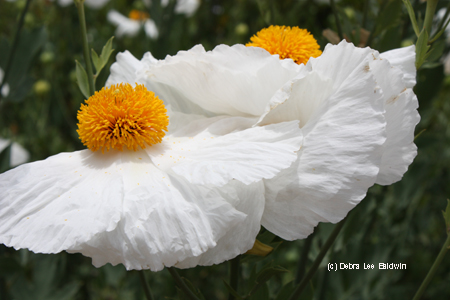
Long before I had my own garden, I was in love with matilija (mah-TIL-eh-ha) poppies. A shrub of what I then called “fried egg flowers” grew near my apartment. It was one of those plants I had to have somehow, someday. And now I do, but like most things this side of Eden, Romneya coulteri is not perfect. Even so, I exult when I see my matilijas in full, glorious bloom every summer.
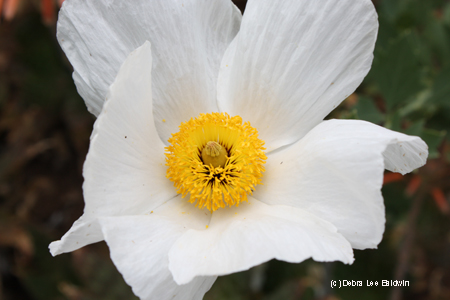
Matilijas are not for the fainthearted. They like a lot of room, and they’re water sniffers. You have to surround them with dry soil to keep them contained. If they sniff moist soil, they’ll jump right into it. Like Mexican evening primrose (which I’ve blogged about, ruing the day I planted it), matilijas are poppies native to Mexico, and rampantly reproduce from underground runners.
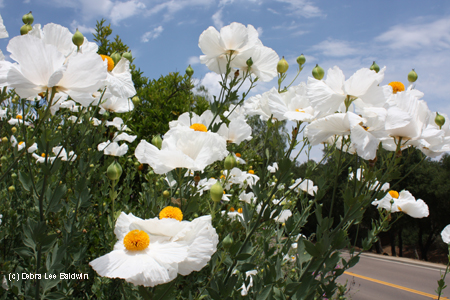
I situated my matilijas in a far corner of the garden, to screen it from the busy street nearby. The clump does this admirably, but is encroaching on an orange tree.
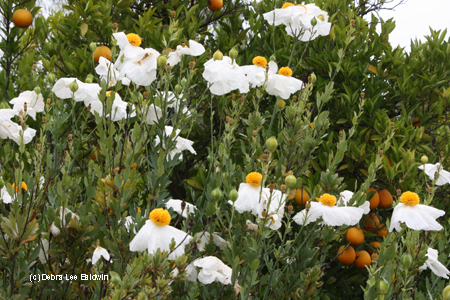
I do like the way the globular orange fruit echoes the flowers’ yolk-like centers. But I’ve had to dig a trench between the two, to keep the poppies at bay.
Matilijas are difficult to get started because their roots don’t like being messed with. But once they take hold, they’re indifferent to soil—mine grow in decomposed granite—and get by on minimal water (though they love it like an alcoholic, and go wild if they get a lot).
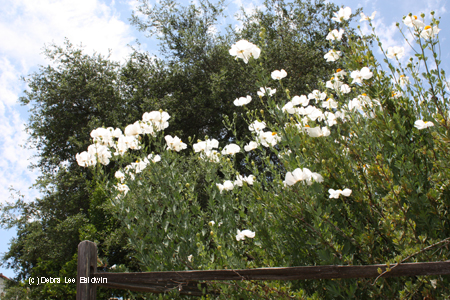
When I’m standing alongside the stems, the flowers are eye level. I’m 5’9″, so that gives you some idea how tall these are. That’s the neighbor’s oak behind them.
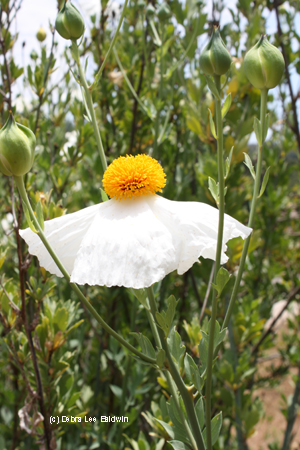
Matilija flowers are about the diameter of my hand, with fingers spread. The petals are crinkled like crepe paper, and are as soft and delicate as they look. I wish I could say matilijas make good cut flowers, but they last about a day and then fall apart.
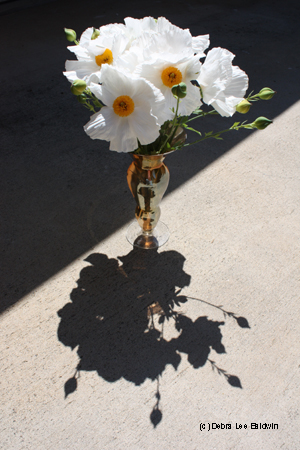
Matilija poppies will thrive just about anywhere the ground doesn’t freeze, except in extreme desert heat. To keep growth in check, don’t water in summer. Keep plants tidy by trimming nearly to the ground in fall. New growth follows winter rains.
